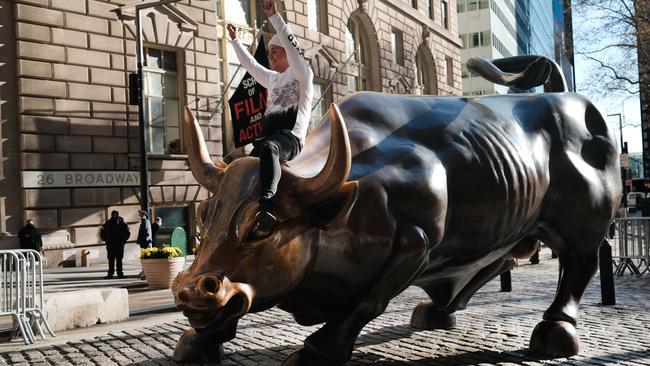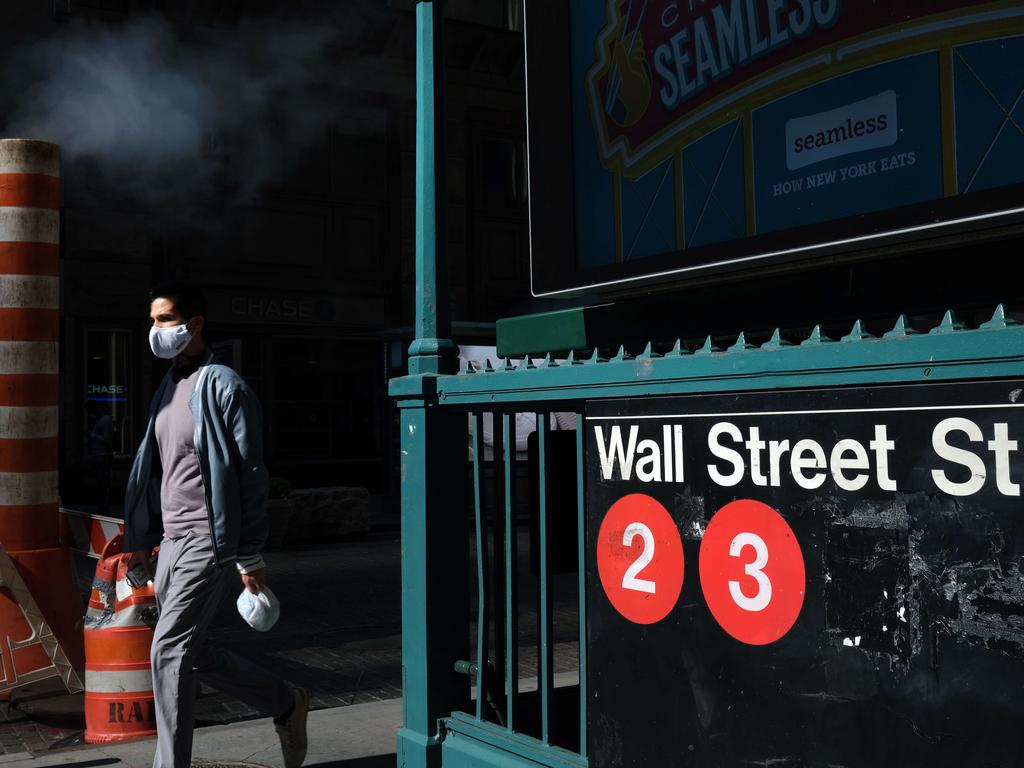ASX’s record year the rebound Australia had to have
The local market has put in a record-breaking run for the year to June 30, that’s what happens when banks and miners fire up at the same time.

The Australian sharemarket has just had its best year ever. We only look at one number these days: it’s the ASX 200 and it’s up 24 per cent in 12 months.
In fact you can make it sound better than that if you add in the rebounding dividends that also flowed from our biggest companies — the ASX 200 Accumulation Index is up close to 30 per cent.
Cripes! Thirty per cent total returns for holding local shares over 12 months — it is a spectacular stretch.
Now for some context.
First, the market over the last 12 months was characterised by a rebound. Pre-Covid in February 2020, the ASX 200 index topped out at 7197 — today it is at 7313.
Second, it’s the best year ever on the index — the index was only invented in 2000.
Third, it’s the fiscal year — the 12 months to June 30 — not the calendar year. Let’s see where we are on New Year’s Eve before we get too excited.
But the point is surely that it happened: it was the rebound we had to have.
What’s more, this sterling stretch hauls the entire equity train back on the tracks: the five-year track record is now back to a persuasively “normal” 7 per cent.
In turn that means if you buy shares you will get about 7 per cent every year and on top of that you will receive dividends of around 4 per cent — so you can reasonably expect shares to offer an annual total return of 10 per cent plus on average.
You just have to have the intestinal fortitude to ride out the horror periods – “to keep your head when all about you are losing theirs”.
Historically, a more useful comparison might be with the little-used All Ordinaries Index, where a 26 per cent improvement represents the best year since 1987.
You probably know what happened after that scorching run in 1987 — the crash of Black Monday. I remember that day clearly: standing beside the telex machine as everyone watched the market drop 25 per cent in a single session.
Whatever else we have on our hands in the markets just now, we are not in a phase like 1987 — there is no point comparing it.

For the forward-looking investor the question is, what happens from here? The market is certainly looking expensive. The price earnings ratio of top stocks by textbook measures is in La La Land. But then interest rates at close to zero are also in La La Land, while “earnings” may only be midway through a recovery.
And so, in a way, the current levels on the ASX make sense.
Of course there may be a correction at any time, any fund manager will tell you that. As Justin Braitling of Watermark Funds Management said this week, we are due a correction but once the sell-off peters out we should see shares “move back to a strong advance until the cycle finishes probably next year”.
The more important issue is, will the sharemarkets continue to deliver superior returns against other assets?
As Don Hamson of Plato Investment Management suggests: “When you stand back and look at where we are now compared to that pre-Covid-19 peak, the market has not done a lot just yet — it’s one reason you need to keep dividends in mind.”
Behind this calm confidence among many professional investors is the reassurance that shares look strong against bonds and cash. Moreover, on the ASX, banks and miners are both buzzing as bank stocks rebound and miners ride the top of a commodity cycle, especially in iron ore.
Just take a look at the powerful performance of the biggest stocks — if you get these companies belting it out of the park then the wider market rallies. CBA is up 44 per cent over the fiscal year, BHP is up 34 per cent.
Moreover, this is the very same group that produces the bulk of the dividends we get from the local market. Just now the big miners are even better than the banks — that’s why Fortescue came into the top six dividend payers in the last year.
Can it keep going? Yes, with bumps along the way. Because of the global rebound, because of low rates, because inflation remains at bay and because — as Sam Sicilia the investment manager at Hostplus famously put it: “There’s no alternative for mums and dads but to stick money in the sharemarket.”







To join the conversation, please log in. Don't have an account? Register
Join the conversation, you are commenting as Logout